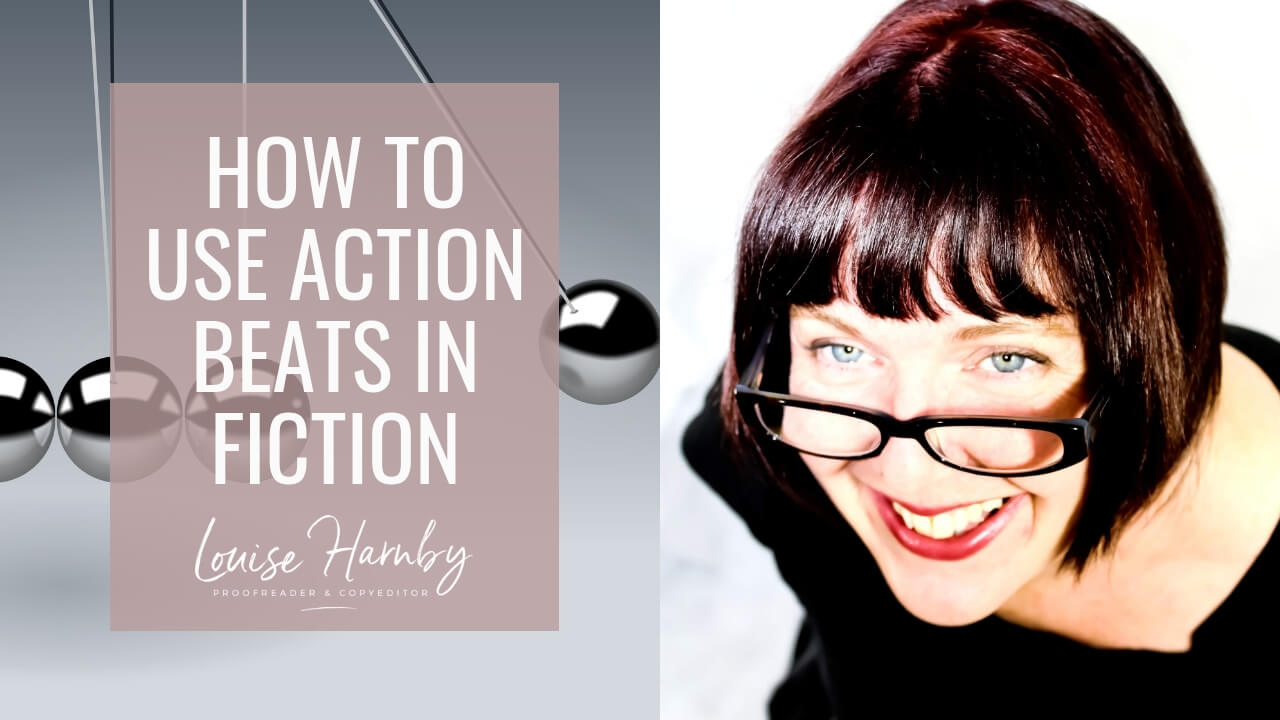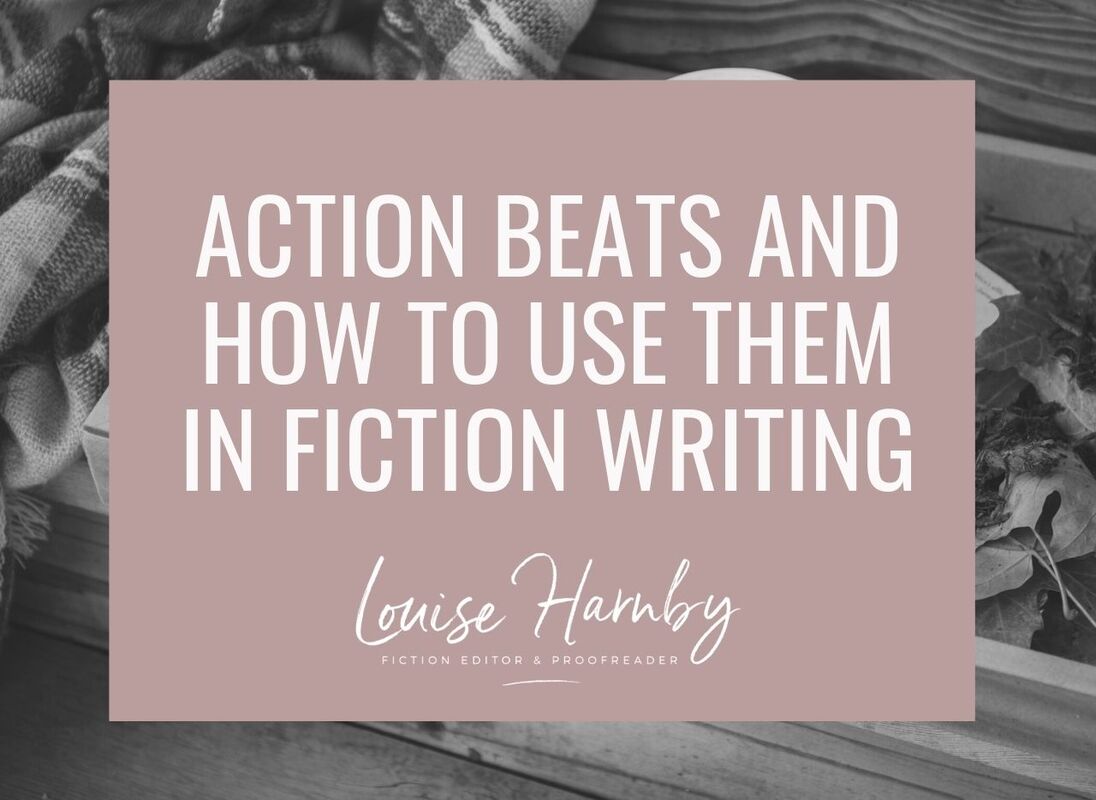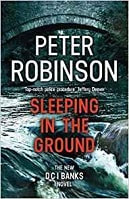|
Action beats are short descriptions that come before, between or just after dialogue. Here’s how to use them in your fiction writing.
What do action beats do?
Action beats enrich characters’ voices by telling us about their emotions, their movements and their intentions while they’re speaking. They can even tell us who’s speaking and whether their speech is reliable or not. And they can ensure that readers don’t become bored. In that sense, we can think of them as alternative narrative ‘voices’ that enrich our perceptions of, or engagement with, the characters. 1. The voice breaker Long chunks of dialogue can be off-putting. Action beats can act as rhythm moderators that break up the speech and its tagging.
2. The emotional voice Action beats can be mood indicators. In real life, we express what we’re feeling or sensing – for example, sadness, pain and frustration – with our bodies as much as our voices. Emotions manifest physically. In fiction, complementary action beats can enrich the reader’s understanding of character emotions but without clumsy dialogue tags or adverbial modifiers that distract from the dialogue. Here are some examples:
3. The physical voice Perhaps you’ve heard of the term ‘talking heads syndrome’. When there’s a lot of dialogue, the reader can end up dislocated from the environment, as if the characters are speaking in a vacuum or floating in white space. In ‘The Dreaded “Talking Heads Syndrome”’, writer James Boyle discusses an example from a writer in his critique group: ‘... [they] wrote a scene for a mystery story in which a detective is arguing with her boss. Though somewhat trite, the dialogue was realistic and believable, but there was virtually no description of their surroundings, no description of how the characters react to their environment.’ Action beats ground the dialogue by quickly giving it physicality – a geographical region, a room, a time of day, the weather conditions, even a body. They keep the reader grounded in the scene, which helps retain immersion. Here are a few more examples:
4. The alternative voice What a character says via dialogue and what they mean or think might be very different. Action beats can act as an alternative voice that indicates reticence or unreliability. They say what the character can’t or won’t. The examples below show you how it works:
‘I swear, I’m not going to tell anyone about this.’ I rubbed my hand over the back of my jeans pocket, feeling for the wire.
Margot relaxed her grip on the knife and pushed herself against me. I flinched at the stench of acrid sweat and stale smoke as she tucked her head into the side of my neck. ‘Promise you’ll never leave me,’ she said. ‘Never.’ I sized up the door and the window. ‘I love you. We’ll always be together.’ The window looked flimsier, jumpable. 5. The voice indicator Action beats and dialogue run on from each other because they’re connected. That means we can use beats instead of tags; they tell the reader who’s speaking. Once more, I've given you some examples below:
How to lay out action beats and dialogue Because action beats relate to dialogue, we run them on rather than creating a paragraph return. Here’s an example from Alexander McCall Smith’s The No.1 Ladies’ Detective Agency (p.125):
Mma Ramotswe stiffened. If Rra Pekwane had killed somebody she would have to make it quite clear that the police should be called in. She would never dream of helping anybody conceal a murderer. [New para: Description]
‘What is this terrible thing?’ she asked. [New para: Dialogue > tag] Mma Pekwane lowered her voice. ‘He has stolen a car.’ [...] [New para: Action beat > dialogue] Mma Ramotswe laughed. ‘Do men really think they can fool us that easily?’ she said. ‘Do they think we’re fools?’ [New para: Action beat > dialogue > tag > dialogue] ‘I think they do,’ said Mma Pekwane. [New para: Dialogue > tag] How to punctuate and format actions beats Before the dialogue The action beat ends with a full point. An opening speech mark follows. The first word of the dialogue takes a capital letter.
Note that I’ve styled this with single quotation marks, but doubles might be your preference, especially if you’re writing in US English. After the dialogue The dialogue finishes with a full point followed by a closing speech mark. The first word of the action beat takes a capital letter.
Again, I’ve used single quotation marks, but doubles are fine too. It’s a style choice. Within the dialogue You have several choices about how to handle this depending on where the beat goes and what punctuation style you choose. Example 1: Mid-sentence In this case, the beat interrupts the dialogue mid-sentence, which lends emphasis to the word ‘This’. If you’re writing in British English style, you might prefer spaced en dashes and single quotation marks. This is how it looks:
If you’re writing in US English style, you might go with closed-up em dashes and double quotation marks. This is how it looks:
Notice the lack of initial capital letters and the omission of commas in both examples. Example 2: Between complete sentences In this case, the beat interrupts the dialogue between sentences. This is how it works:
Notice that because the sentences in the dialogue are complete, we punctuate and capitalize according to the Before the dialogue and After the dialogue examples above. Overuse, repetition and cliché As is always the case with good writing, devices such as action beats, free indirect speech, dialogue tags, and anaphora work best when the reader can’t identify a writing pattern. Instead, mix things up so that your reader doesn’t guess which literary tool’s coming. Pay attention to whether you repeat particular action beats, particularly clichéd ones. If your characters often purse their lips, furrow their brows, rake their hands through their hair, spit on the ground, or roll their eyes while they’re speaking, it’s time to think of alternative ways to express despair, disgruntlement or annoyance. Summing up Use action beats to enrich the emotionality of your characters’ speech and add interest to your writing. Think about how they can anchor the dialogue in a physical space, and whether they’ll provide an alternative to a speech tag so we know who’s saying what. However, watch out for oft-repeated phrases that turn beats from pop to pattern. Cited sources
Louise Harnby is a line editor, copyeditor and proofreader who specializes in working with independent authors of commercial fiction, particularly crime, thriller and mystery writers.
She is an Advanced Professional Member of the Society for Editors and Proofreaders (SfEP), a member of ACES, a Partner Member of The Alliance of Independent Authors (ALLi), and an Associate Member of the Crime Writers’ Association (CWA). Visit her business website at Louise Harnby | Proofreader & Copyeditor, say hello on Twitter at @LouiseHarnby, or connect via Facebook and LinkedIn.
16 Comments
22/4/2019 03:34:15 pm
Hello Louise!
Reply
Louise Harnby
22/4/2019 04:03:17 pm
Hi, Felicia! I would avoid commas in that particular example because you need the parenthetical dashes to set off the interruption of the beat. If I were editing for an author, I’d change commas to dashes.
Reply
22/4/2019 08:11:00 pm
I actually just used this beat in an MS for the first time last week, with commas--oops! Thanks for the clarification.
Lindsey Russell
28/4/2019 09:23:49 pm
Oh, this is good! I know my characters talk a lot - mainly about the crime at the centre of the story. I do try and break the conversation up with mannerisms and thought etc but find it difficult - I just want them to get on with solving the crime by brainstorming the evidence. These examples (love that you give examples) are a reminder I must try harder.
Reply
Louise Harnby
28/4/2019 09:34:32 pm
Cheers, Lindsey! That's lovely feedback. I always try to give examples, particularly from mainstream published fiction. I think they help give writers confidence because they can see what others have done. Thanks again.
Reply
28/4/2019 10:27:47 pm
Another excellent piece, I really love this detail you give. I'm a great one for action beats, they play such an important role.
Reply
Louise Harnby
28/4/2019 10:57:23 pm
Thank you, Marie-Gaye! You're right - they can really make prose pop!
Reply
26/5/2019 01:40:28 pm
Gee, this was really good, Louise. As a copy editor myself, I love how you explained all these options. As a writer of mystery, I soooo appreciate all the insights. Thanks!
Reply
Louise Harnby
26/5/2019 08:21:36 pm
Cheers, Paula! Where can we find your mystery novels? I'd love to take a peek!
Reply
16/2/2020 07:10:54 pm
Great discussion of action beats. The inclusion of punctuation guidelines makes this especially helpful.
Reply
Louise Harnby
17/2/2020 09:32:13 pm
Thanks so much, Faye. It makes such a difference when authors nail this.
Reply
Marcel John Legosz
28/5/2021 05:39:10 am
Hi Louise
Reply
Louise Harnby
28/5/2021 11:11:12 am
'as he filled the kettle' is modifying the tag so doesn't need a comma.
Reply
Brittany
10/4/2023 02:59:52 pm
This is a very helpful post! I have a question specifically about the action tags before the dialogue. Is that a new-ish grammar rule? I remember learning "when a new person speaks, indent! Quotes will always be the start of a new paragraph."
Reply
Louise Harnby
11/4/2023 11:54:56 am
Hi, Brittany.
Reply
DeAnn
4/1/2024 01:01:29 am
As a layman in the writing world, I need someone to explain (like you would a newb) Action beats. None of my college English books or vocab/grammar books says anything about them. (early 90s)Your examples are complete sentences, but sometimes we only use two words. (Ex. 'He nodded' <--I assume action beat ... He laughed --> dialogue tag) I'm getting dinged left and right! My understanding is that if it can be said with the mouth,(said, replied, confirmed) it is a 'dialogue tag' punctuated with (," lc). If it is something you do with the body,(smiled, coughed, nodded) it is an 'action beat' and is punctuated with (."Uc). Please help the newb!
Reply
Leave a Reply. |
BLOG ALERTSIf you'd like me to email you when a new blog post is available, sign up for blog alerts!
TESTIMONIALSDare Rogers'Louise uses her expertise to hone a story until it's razor sharp, while still allowing the author’s voice to remain dominant.'Jeff Carson'I wholeheartedly recommend her services ... Just don’t hire her when I need her.'J B Turner'Sincere thanks for a beautiful and elegant piece of work. First class.'Ayshe Gemedzhy'What makes her stand out and shine is her ability to immerse herself in your story.'Salt Publishing'A million thanks – your mark-up is perfect, as always.'CATEGORIES
All
ARCHIVES
July 2024
|
|
|
|























 RSS Feed
RSS Feed





